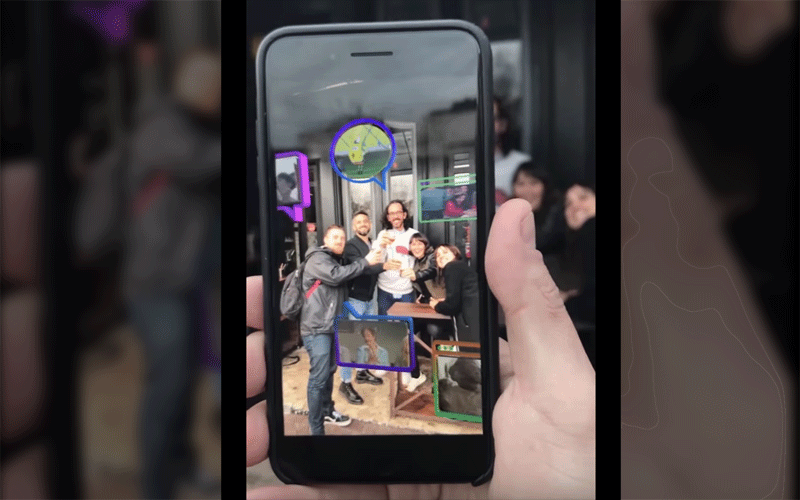 EMERGING TECH
EMERGING TECH
 EMERGING TECH
EMERGING TECH
 EMERGING TECH
EMERGING TECH
A big development for the wild world of animated graphics is coming to augmented reality from Tenor, the massive search site for Graphics Interchange Format images and developer of the Tenor GIF keyboard.
Those amazing moving pictures everyone loves (or hates) on social media will soon escape the web and leap into “reality,” as the company today announced a software development kit and application programming interface that developers can use to embed animations in their augmented reality apps.
Imagine, if you will, being able to see a newspaper similar to those that appear in the movie Harry Potter: an app on your phone, when pointed at a publication, could animate pictures and photos as you read. Or perhaps, when your friend points their phone at you, a cartoon thought bubble shows an animated image of a staring hungrily at birds. The ugly artwork on the walls at work could take on a whole new life as placement for the week’s favorite animated image as co-workers have a little augmented reality fun.
To show off capability the SDK provides for AR app developers, Tenor teamed up with digital art studio Dift to produce this demo video:
In the video, celebratory GIFs float in midair held in windows around an office for a co-worker’s birthday. At one point, an animated graphic of a plane flying past pulling a banner saying “LET’S GO TEAM” glides down a hallway. With the API, animated GIFs can be placed anywhere in a space visible by the phone and keep their location using augmented reality tracking technology.
The demonstration uses the Tenor SDK and Apple’s ARKit augmented reality library for iOS devices. The SDK is powered by Unity Technologies SF’s Unity AR engine for mobile devices.
According to the company, the SDK will allow developers a wide variety of tools to allow their AR apps to express themselves using GIFs. An animated image can be displayed on a T-shirt, a GIF banner can be dragged by a plane or “floating” GIFs can be hovered in midair above people’s heads or even used to replace a computer screen.
Founded in 2014 under the name Riffsy, changed in 2016, Tenor launched with a vast GIF search engine and now operates with integrations into major text messaging services. With the company’s “GIF keyboard,” users can quickly find an animated graphic to help themselves visually express themselves on social media messages, direct messages and in Slack channels.
GIFs are a common mode of expression in forums and on social media such as Twitter and Facebook, since they’re smaller and easier to access than video, with no obnoxious sound. Twitter added GIF support in 2014 and Facebook followed suit in 2015. By 2016, Twitter even started to enable extremely large GIF sizes to accommodate long-form animations that were more videolike.
During 2015, people shared more than 100 million GIFs on Twitter alone to express themselves.
Although AR is a currently much more niche market for expression, AR developments for snapping pictures with mobile phones has led innovation with media services such as Snapchat from Snap Inc. The photo and video-sharing service added its own augmented reality suite this year to allow people to include 2-D and 3-D “stickers” on media taken and shared.
The SDK is free for developers and available on Tenor’s website alongside a free app example on GitHub. Developers interested in an in-depth review of the API and Tenor’s other capabilities can visit the company’s documentation page.
THANK YOU